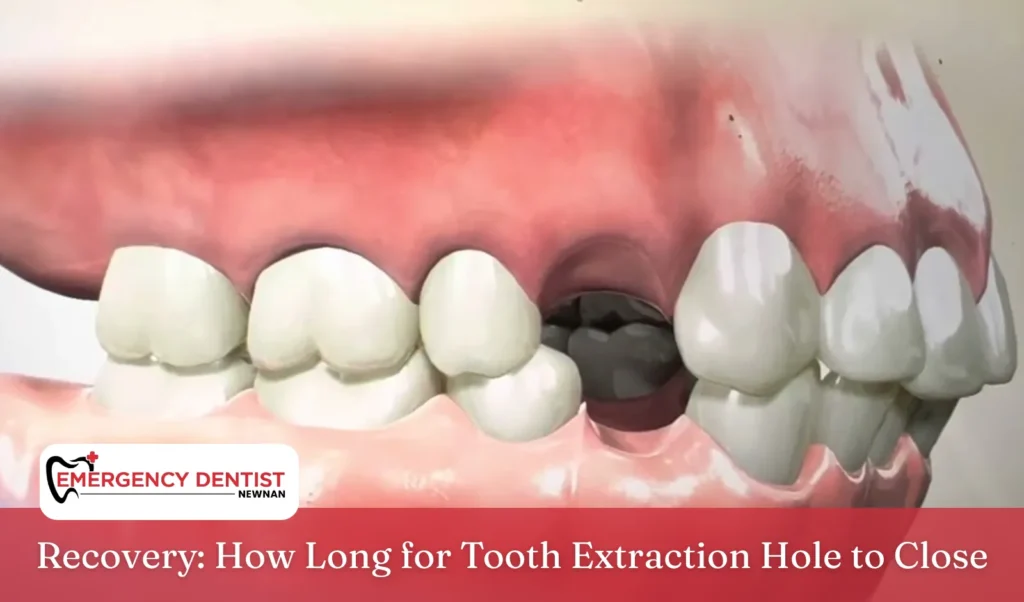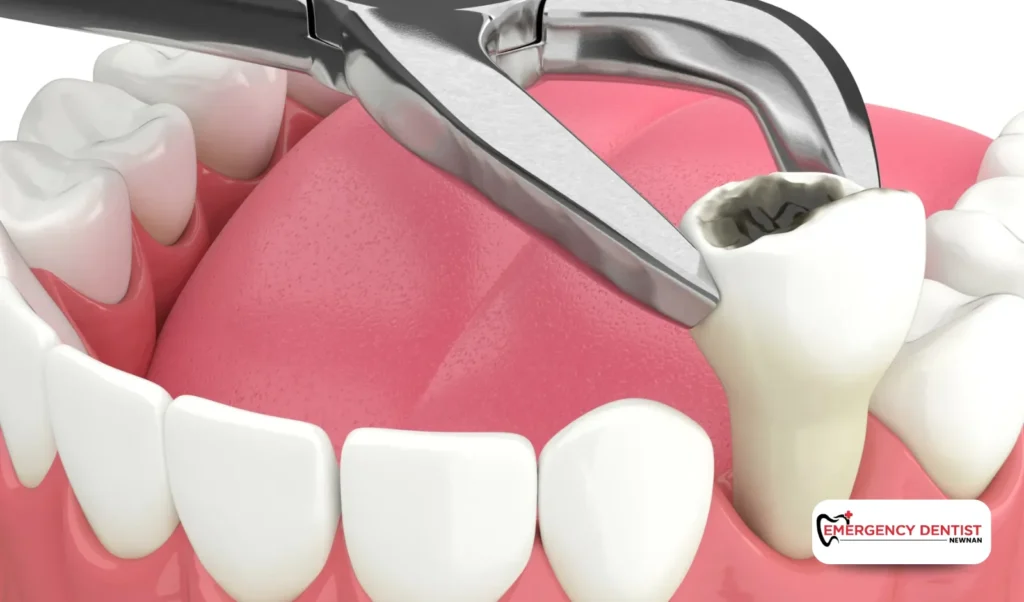Recovery: How Long for Tooth Extraction Hole to Close

Many patients ask, “How long is the tooth extraction hole closed?” Whether the procedure is a simple extraction or a more complex surgical extraction, understanding the expected healing time can help reduce stress and guide proper aftercare. While every patient heals differently, being familiar with the stages of the healing process provides reassurance and encourages healthier habits during recovery.
The total recovery time depends on the type of extraction, overall health, and how well the extraction site is cared for. If problems arise or healing seems delayed, an Emergency Dentist in Newnan can provide immediate support to ensure safe recovery.
Why Does an Extraction Hole Form?
When a dentist performs a tooth removal, the procedure leaves behind an empty tooth socket in the jawbone. This opening, also called the extraction site, is surrounded by the gum line and soft tissue. Although the hole may look large at first, your body quickly begins the repair process. Over time, new tissue forms and the bone beneath strengthens, helping the socket close naturally.
The Importance of the Blood Clot
Within about 30 minutes after a tooth was removed, a blood clot started to form inside the socket. This clot works like a natural bandage, covering exposed bone and nerve endings. It is the foundation of the healing process, giving soft tissue the ability to grow and eventually seal the gum line.
If the clot becomes dislodged or dissolves too early, it can lead to dry socket, a painful condition that slows recovery time and increases the risk of infection. Protecting this clot is one of the most important parts of early healing.
Types of Extraction and Healing Time

The types of extraction affect how long it takes for the hole to close:
- Simple extraction – The tooth is gently loosened and removed without surgery. This is faster to recover from, and the extraction site often begins closing within one to two weeks.
- Surgical extraction – Needed for impacted or broken teeth, especially wisdom teeth. Because gum or bone may need to be cut, the healing time is longer. It can take weeks before the soft tissue fully closes the socket.
Wisdom teeth extractions are often more complicated, so their healing period is typically longer compared to other teeth.
Stages of the Healing Process
The healing process happens in several stages, and each one is important:
- First 24 hours – A blood clot starts to form, mild swelling begins, and light bleeding is normal.
- Days 2–7 – Soft tissue repair begins, and the gum line gradually starts closing the hole.
- Weeks 2–4 – Most gum tissue heals, although deeper areas of the tooth socket and bone remain in recovery.
- 1–3 months – The bone becomes stronger, and the hole continues to shrink.
- Complete healing – Depending on the procedure, full closure of gum and bone can take several months until the site is considered fully closed.
How Long for Hole to Close After Tooth Extraction
For many patients, the visible hole begins shrinking within the first week. After a simple extraction, the soft tissue may close in two to three weeks, although deeper healing may continue for months.
For a surgical extraction, particularly when removing wisdom teeth, healing usually takes longer. It can require six weeks or more before the gum line completely seals the socket. Complete healing of bone and soft tissue may not occur for several months. While recovery times vary, following good aftercare practices helps speed up the process.
Protecting the Extraction Site During Recovery

Taking care of the extraction site is essential for smooth healing:
- Avoid food particles – Eat soft foods like yogurt, mashed potatoes, or smoothies that won’t get trapped in the socket.
- Choose room temperature meals – Hot or very cold items can disturb the clot and slow the healing process.
- Maintain gentle oral hygiene – Rinse your mouth carefully with salt water and brush near the gum line without affecting the clot.
- Rest and recover – Avoid heavy activity, which can increase swelling and extend recovery time.
By following these steps, the clot remains protected and the extraction site can close more effectively.
Signs of Healthy Healing vs. Complications
As healing progresses, you should notice steady improvement: less swelling, reduced pain, and the hole gradually closing. However, some warning signs may point to complications:
- Severe or worsening pain several days after extraction
- Persistent unpleasant taste or odor in the mouth
- A socket missing its protective blood clot
- Swelling that does not improve or gets worse
These symptoms may indicate dry socket or infection. If you notice them, contact an Emergency Dentist in Newnan for treatment as soon as possible.
Conclusion
Healing after a tooth extraction takes time and patience. A simple extraction may allow the site to close in just a few weeks, while a surgical extraction, particularly for wisdom teeth, often takes longer. Even if the gums look healed, complete healing of bone and soft tissue can take several months before the socket is fully closed.
Protecting the blood clot, avoiding food particles, eating room temperature foods, and keeping up with gentle oral hygiene are essential for preventing dry socket. Every patient’s healing time is unique, but with consistent aftercare and professional guidance, the extraction site will heal safely. If your recovery time feels delayed or unusual, an Emergency Dentist in Newnan can provide the care needed for a smooth and healthy healing process.



